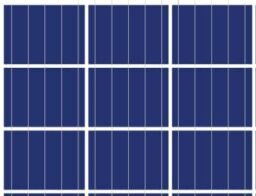150kgCO2/Day Buffer Photovoltaic Farm
The amount of carbon dioxide (CO₂) emissions avoided by a 34 MW solar power plant depends on several factors, such as the local energy grid’s carbon intensity and the amount of electricity the solar farm generates annually. Here’s a general calculation:
Assumptions:
1. Annual Generation: A solar power plant typically generates about 1,500–2,000 MWh per installed MW per year, depending on location and solar irradiance. Let’s assume 1,800 MWh/MW/year.
34 MW plant: .
2. Carbon Intensity of Grid: The carbon intensity of electricity in Zambia is estimated at approximately 0.75 metric tons of CO₂ per MWh for fossil-fuel-dominated grids.
Calculation:
\text{CO₂ Avoided (tons)} = \text{Annual Generation (MWh)} \times \text{Carbon Intensity (tons/MWh)}
\text{CO₂ Avoided} = 61,200 , \text{MWh/year} \times 0.75 , \text{tons/MWh} ]
\text{CO₂ Avoided} = 45,900 \, \text{tons/year}
Result:
A 34 MW solar power plant can avoid approximately 45,900 metric tons of CO₂ emissions per year, assuming these conditions. The actual figure may vary based on operational efficiency and local grid carbon intensity.
The Enel Green Power Logo
attiva menù
Zambia’s sun-tracking solar panels are a first for Sub-Saharan Africa
Link copied to clipboard
28 January 2022
2 min.
Zambia’s sun-tracking solar panels are a first for Sub-Saharan Africa
Link copied to clipboard
Ngonye solar plantNgonye solar plant
The 34 MW Ngonye solar photovoltaic plant is the Enel Green Power’s first power plant in Zambia. The PV facility, which is located in the Lusaka South Multi-Facility Economic Zone in the country’s south, is part of the World Bank Group’s Scaling Solar program. This program is being carried out by Zambia’s Industrial Development Corporation (IDC), which in June 2016 awarded Enel the right to develop, finance, construct, own and operate the plant.
Ngonye solar plant uses tracking systems that feature solar PV panels to track the movement of the Sun during the course of the day, capturing sunlight and converting the energy into electricity.
It is the only site in sub-Saharan Africa to use tracking technology developed by Convert Italia, a Rome-based company that applies photovoltaic solutions all over the world. EGP decided to enlist the services of Convert Italia because the designated land for the solar farm was not large enough to accommodate the planned infrastructure.


